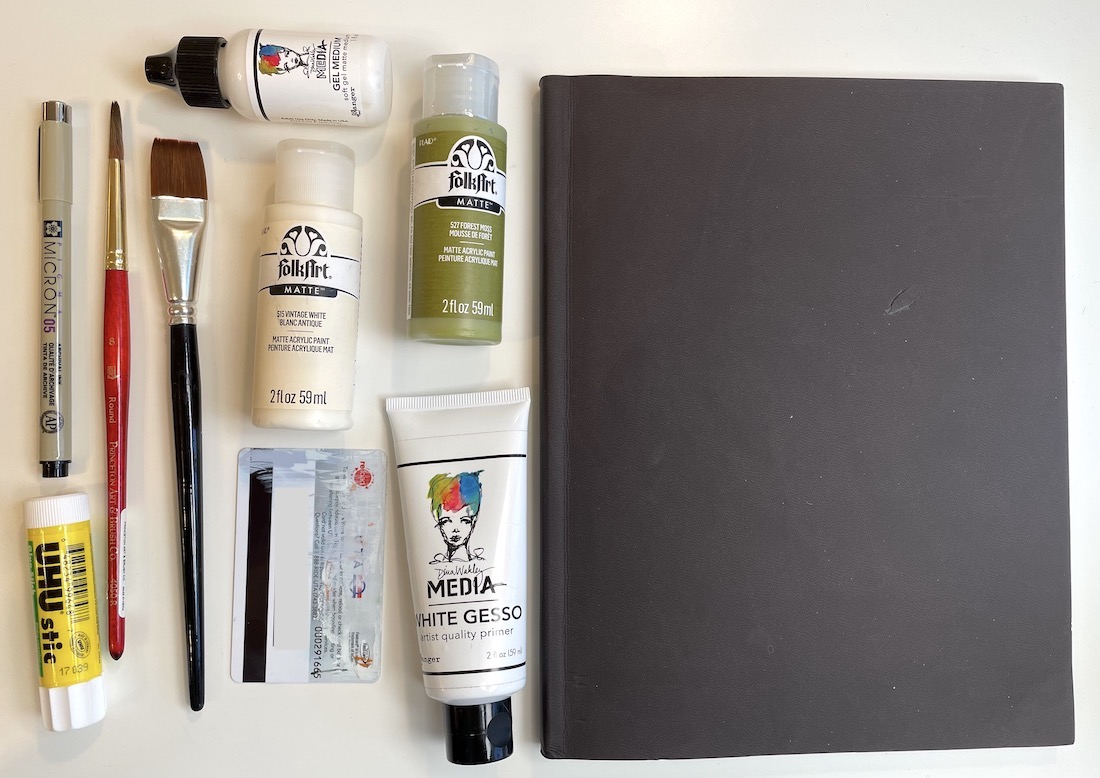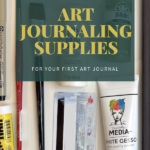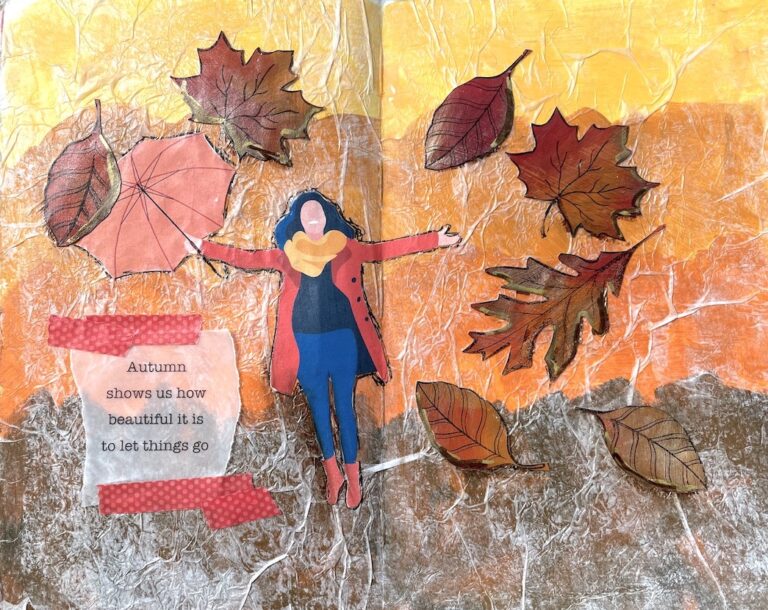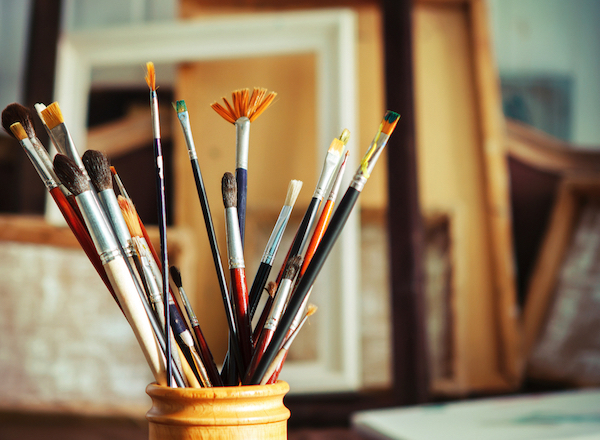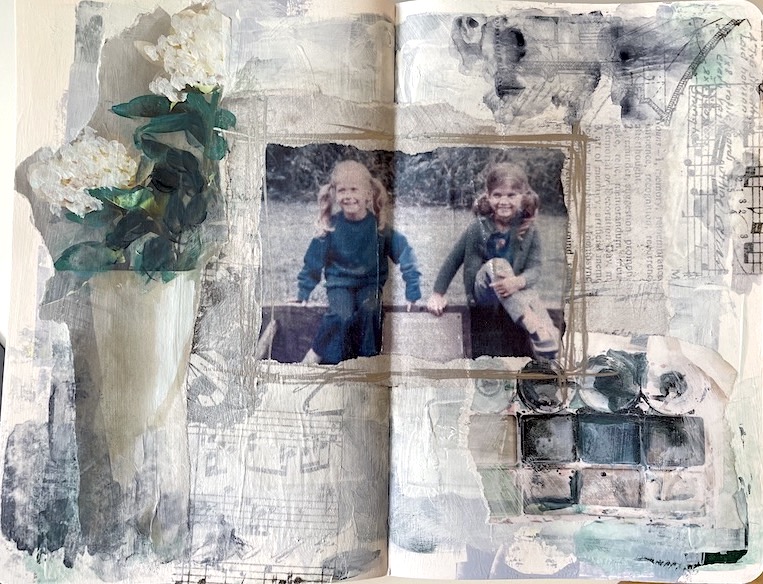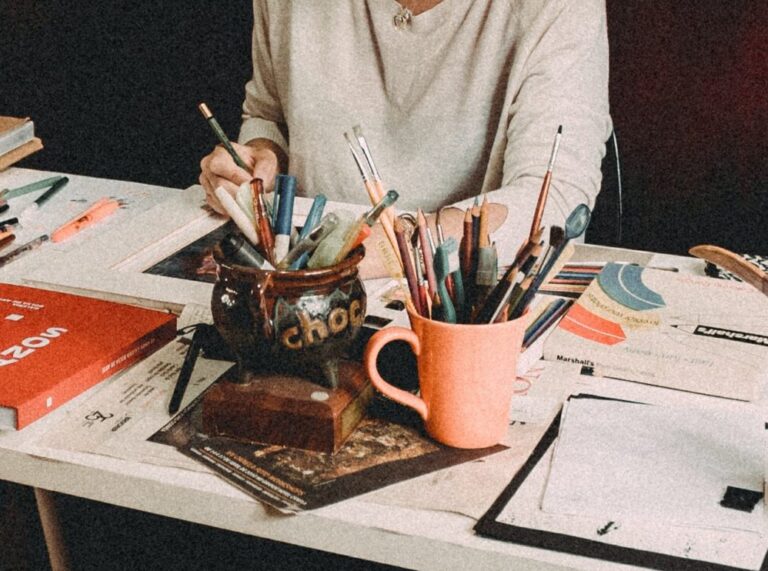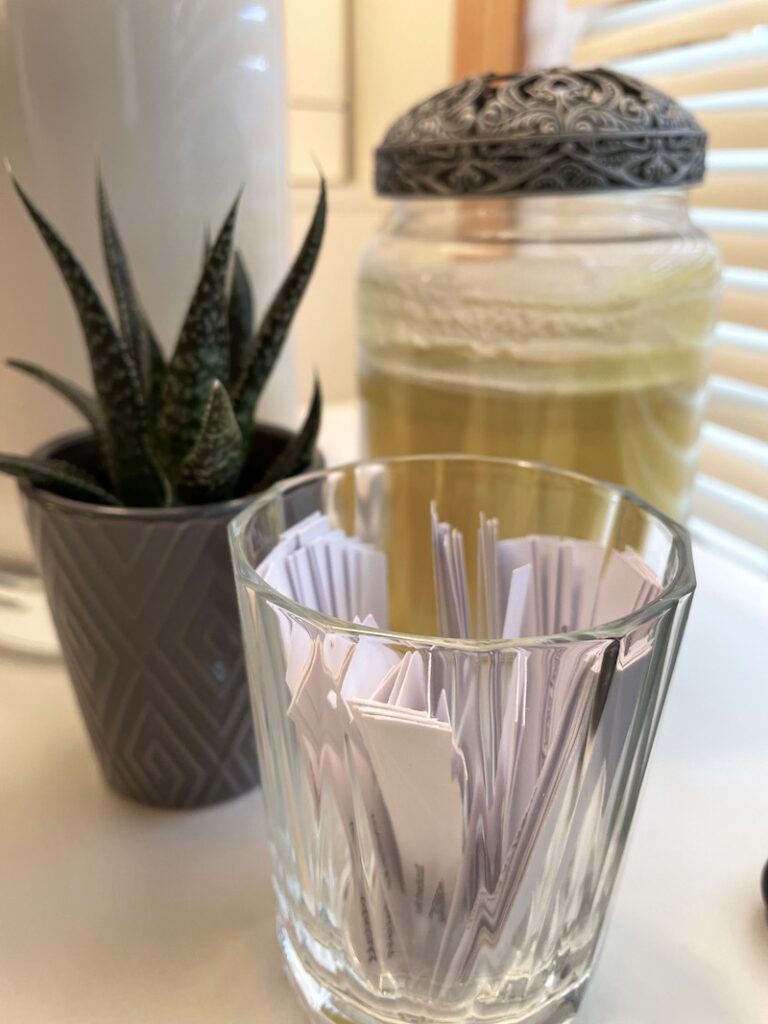Art Journaling Supplies: Working in Your First Art Journal
If you’re just starting out with your first art journal, the amount of art journaling supplies available (and the possibilities) can be overwhelming. I recommend starting simple. Here are a few options for what you’ll need to get started without spending a lot of money.
Start Small… Grow Small.
If you already have a few art or craft supplies, try starting out using what you have. Even if you only have a few cheap acrylic paints and a paintbrush.
As you begin to play around and mark up your journal, you might start to capture your own sense of style. When you’re used to getting in your book and playing, you’ll probably begin to understand more of what you like and what you don’t. For instance, you may fall in love with acrylics so why bother buying watercolors? If you find out you like to draw and doodle, why bother buying cute ephemera and stamps (except that they’re cute)?
I’m the type to go all in, which is not always a good thing. For instance, when I wanted to start using paint, I went and bought 28 different bottles of paint because they were all so pretty. (Thank goodness I ended up liking paint!) When my sister and I first discovered washi tape, you would have thought there was a trophy for who could collect the most washi tape. I am now the “proud” owner of a disturbing amount of washi.
Let’s take a look at the basic supplies.
The basics
The journal. If you don’t already have one, then this is the one thing I recommend spending a little bit of money on. There are four journals I recommend that are relatively inexpensive.
- Soho Brick mixed media journal. These aren’t necessarily “pretty” but you can always paint the cover to look different later. This is probably the least expensive and least intimidating (at only 5.5” x 5.5” square). It has 40 sheets of 95 lb (or 200 gsm) paper which should hold up ok for a little bit of acrylic paint and glue. I normally see this around $6-7 at Jerry’s Artarama. I recommend this one for a beginner for its approachable size and price.
- Ranger Dylusions Creative Journal (8” x 5”). This typically runs about $13-15 but depending on the store, you may be able to find a coupon. These are off-white, smooth card stock pages (guessing around 270 gsm, so heavier stock than the Soho brick).
- Stillman & Birn premium sketchbook (the Zeta series, 5.5” x 8.5”). This is a good acid-free book with 26 sheets of quality, heavyweight paper at 270 gsm. It’s a smooth paper similar to the Dylusions journal mentioned above, but with white paper. This is your best bet if you want to try your hand at watercolor.
- Strathmore Mixed Media softcover 500 series journal. This comes in a 5.5” x 8.5” also and runs about $17. This also comes in a larger size (as many of the books listed here do) which I love. This book has thinner paper (190 gsm), cream color with a little bit of tooth. While this can hold watercolor, I wouldn’t recommend it for super heavy water use.
A Pen. Use what you have and what you love. If you really just must buy a new pen, I recommend either a black Micron 05 (or any size you prefer) or Staedtler pigment liner. Both of these are permanent and are great for writing, outlining, doodling and whatever else you need to start. FYI – these are much cheaper in-store (like Blick or Walmart) vs. Amazon.
Paint. If you’ve never painted before, I recommend starting out with acrylic paint. It’s inexpensive and readily available in a wide variety of colors. Pick out a few colors you love. We won’t talk about color theory right now. If you’re still stumped, pick out a red, yellow, blue, white, black and if you’re feeling crazy, add on a pink, orange and green. If you’re getting the little bottles of craft acrylic somewhere like Michael’s, that should run you no more than $9 for all of them because they are almost always on sale.
Paintbrushes. This one can be tricky because there are so many different kinds it can be overwhelming. Don’t worry, start simple.
- Brand – You really don’t have to buy super expensive brushes for your journal. Try student grade brushes like Royal & Langnickel, Simply Simmons or the Princeton value line. Hobby Lobby carries a brand called Master’s Touch that’s just fine and they’re often on sale for half-off.
- Shape – I recommend starting with two shapes: a #6 or #8 round brush and a ¾” flat. These two brushes are plenty for getting started and getting familiar with paint.
- Type – synthetic brushes are just fine for an art journal. You might see brushes with specific hair types like kolinsky, sable, hog or squirrel – all beautiful brushes but also expensive. I would hold off on spending that kind of money straight out of the gate. Just stick with synthetics.
Old credit card or membership card. Everyone has one of these laying around somewhere. This is a great tool for spreading paint across larger areas of paper and gives great texture.
Glue stick. You can find inexpensive glue sticks at the dollar store or at the craft store. I do prefer spending a little more and getting the UHU stick because it holds up a little better and is acid free. The blue ones make it easier to see where you put the glue (it dries clear). If you already have something at home, use that; most glue sticks will work just fine to start.
Magazines, scraps of inspirational things like words, images, colors and textures. Before I throw any magazine away, I flip through that sucker and tear out anything that I find interesting, pretty, fun or that I just think I might want to use in a background one day. I toss it all in a box for future use. Only then will I throw the destroyed magazine in the recycle bin.
Things you love or have around the house like photos, rubber stamps, tissue paper from a gift or even a small square of bubble wrap.
Cost
You don’t have to get high-quality out of the gate. Here are a few money-saving tips.
Dollar stores. Seriously this can be an option if you’re just starting out. They have acrylic paint there, even though the colors are random, they only offer a few colors, and it is incredibly cheap paint, give it a shot. But if you go that route, before you leave the store, head over a couple of aisles and also pick up a box of corn starch. You’ll want to stir that in with the paint to make it thicker and start to look close to slightly better paint. The dollar store typically also carries paintbrushes, but you can also find things like magazines or books you can use for inspiration and journal ephemera.
However, local craft and hobby stores like Michaels, Hobby Lobby or Joann’s usually carry acrylic paint for around a dollar also (often times, less than a dollar when it’s on sale). Folk Art or DecoArt are just fine for an art journal. The corn starch trick works for these also (or, just use multiple layers of paint).
If you don’t have a decent craft store in your town (trust me, I understand; I live in the middle of nowhere), try going online. I know… it’s not nearly as fun. I like to hold the physical items in my hand but sometimes, we don’t have that luxury. So, if that’s the case for you, online stores like Amazon, Blick, Jackson’s Art or Jerry’s Artarama are good sources.
Thrift stores for ephemera like old book pages, postcards, magazines. I even found a stack of old patent blueprints for a 1950’s snow plow for 25 cents and a Better Homes and Gardens magazine from 1958 for a dollar. There were some really fun images in that puppy!
Add-ons
Once you start getting a feel for your style, your frequency, the space you have available to house your supplies, then you can think about expanding your toolbox with things like white gesso, matte gel medium, posca pens, stamps, stencils, art crayons, or pastels. And of course, washi. But don’t worry about these yet. Once you’re ready for more, check out this post for my list of must-haves.
There are a ton of possibilities and cost can vary significantly. Just try (try) to take it slow to start and get a feel for what you like or if you like art journaling. Then slowly add a few other supplies here and there.
If you get stuck, try checking out some art journaling prompts or our beginner online class to help overcome the fear of the blank page.

